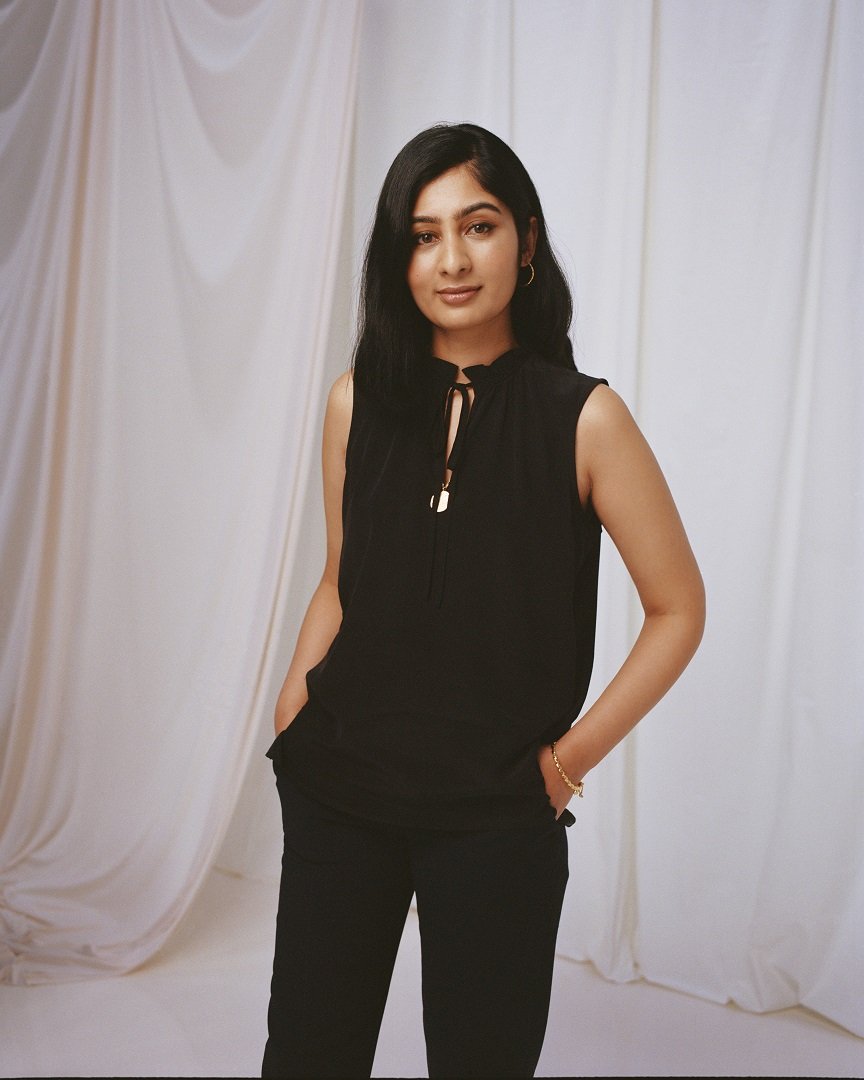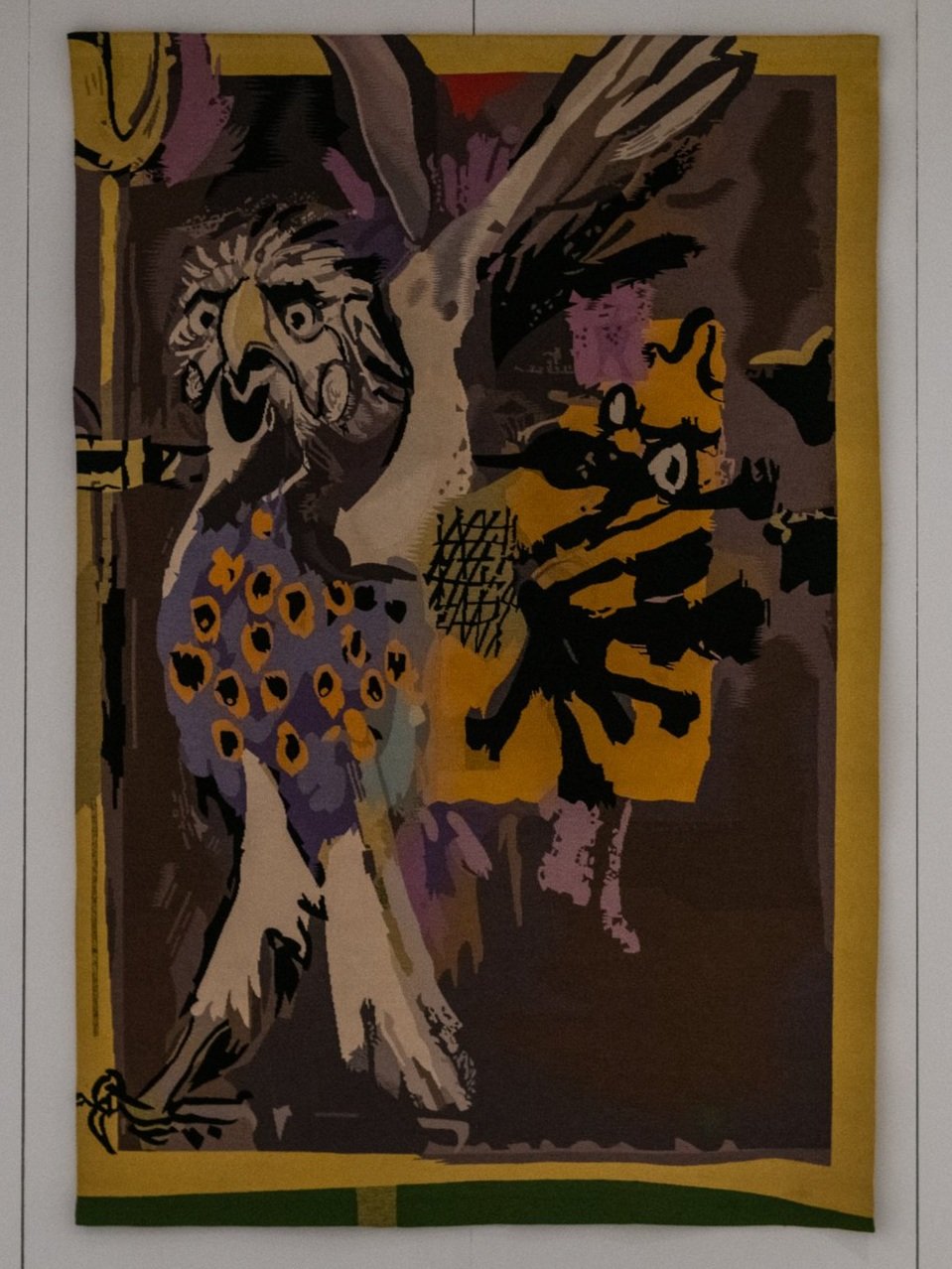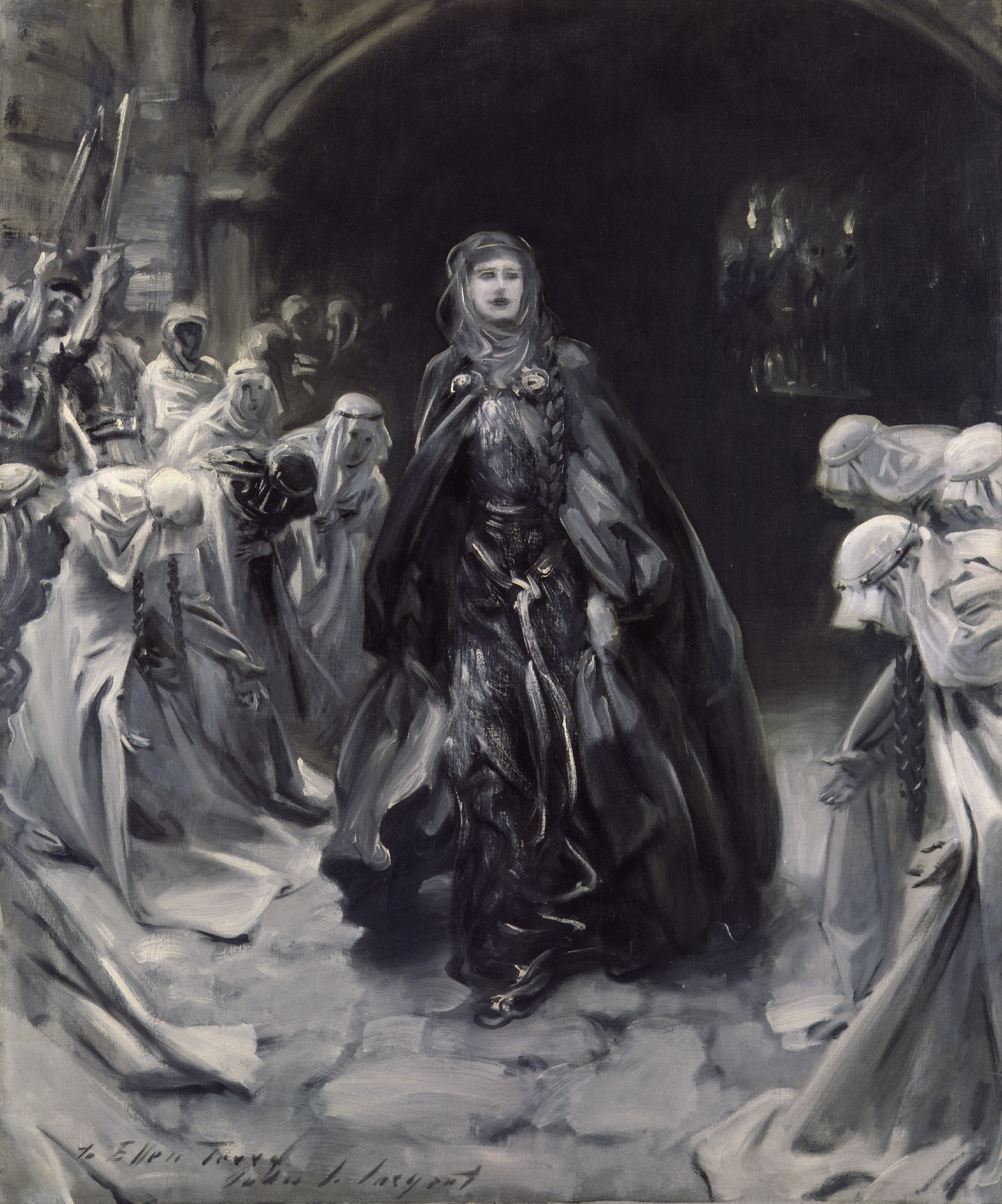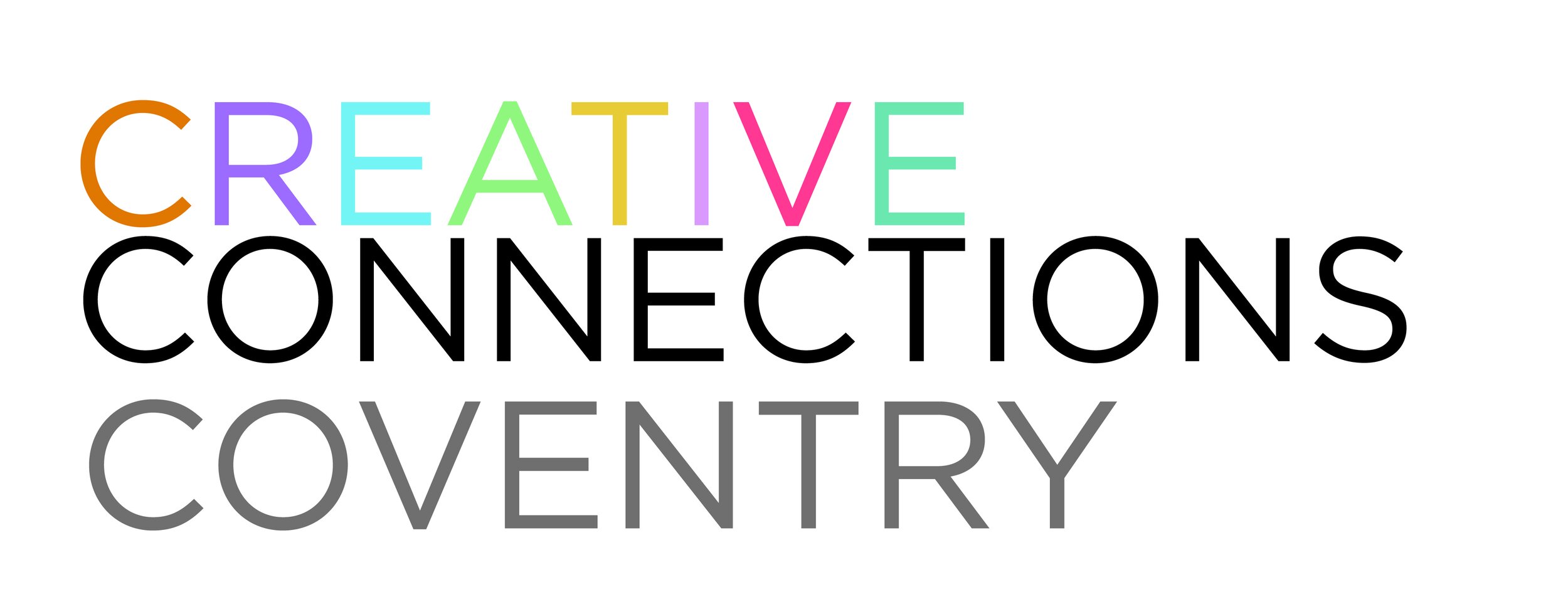
Creative Connections Coventry
Herbert Art Gallery & Museum
4 March – 30 May 2022
Creative Connections Coventry brings together the collections of the National Portrait Gallery and the Herbert to explore and celebrate iconic people linked to Coventry. Taking inspiration from the two collections, art students from Barr’s Hill School in Coventry have worked collaboratively with artist Maryam Wahid and the Herbert’s Learning and Engagement Team to explore portraiture and discover the inspirational stories of people associated with the city.
Maryam Wahid is an award-winning artist based in Birmingham whose work explores identity and representation. She created photographic portraits with young people from Barr’s Hill School, which are displayed as part of this exhibition alongside the collections that inspired them. The exhibition also includes artwork created by the students during workshops held over several months at the school and at the Herbert.
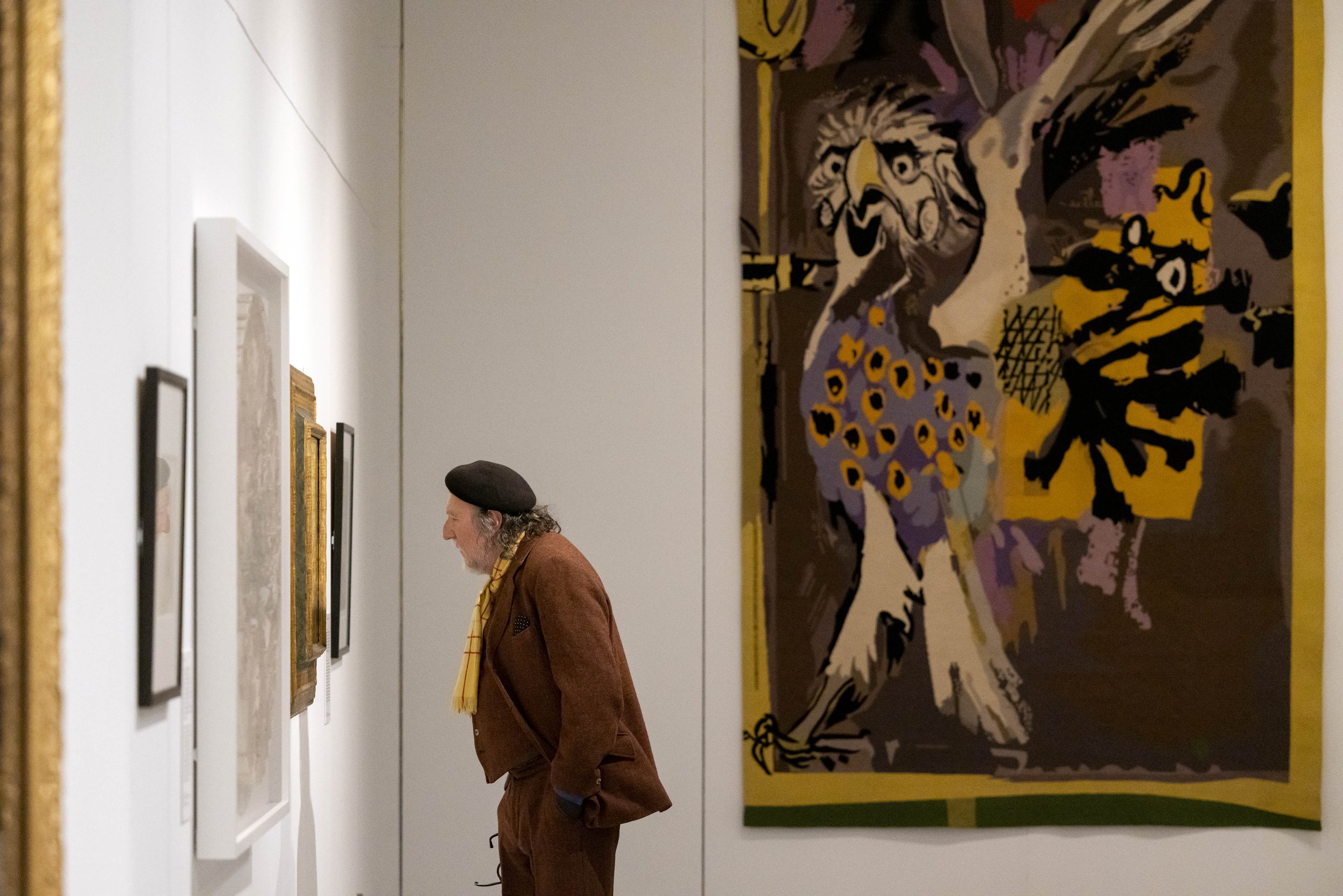







Creative Connections Coventry is a National Portrait Gallery project in partnership with the Herbert Gallery & Museum. Creative Connections Coventry is funded by The National Lottery Heritage Fund and Art Fund with the generous support of the Palley family and additional support from the 29th May 1961 Charitable Trust.
This exhibition has been made possible as a result of the Government Indemnity Scheme. The Herbert Art Gallery & Museum and the National Portrait Gallery would like to thank HM Government for providing Government Indemnity and the Department for Digital, Culture, Media and Sport and Arts Council England for arranging the indemnity.
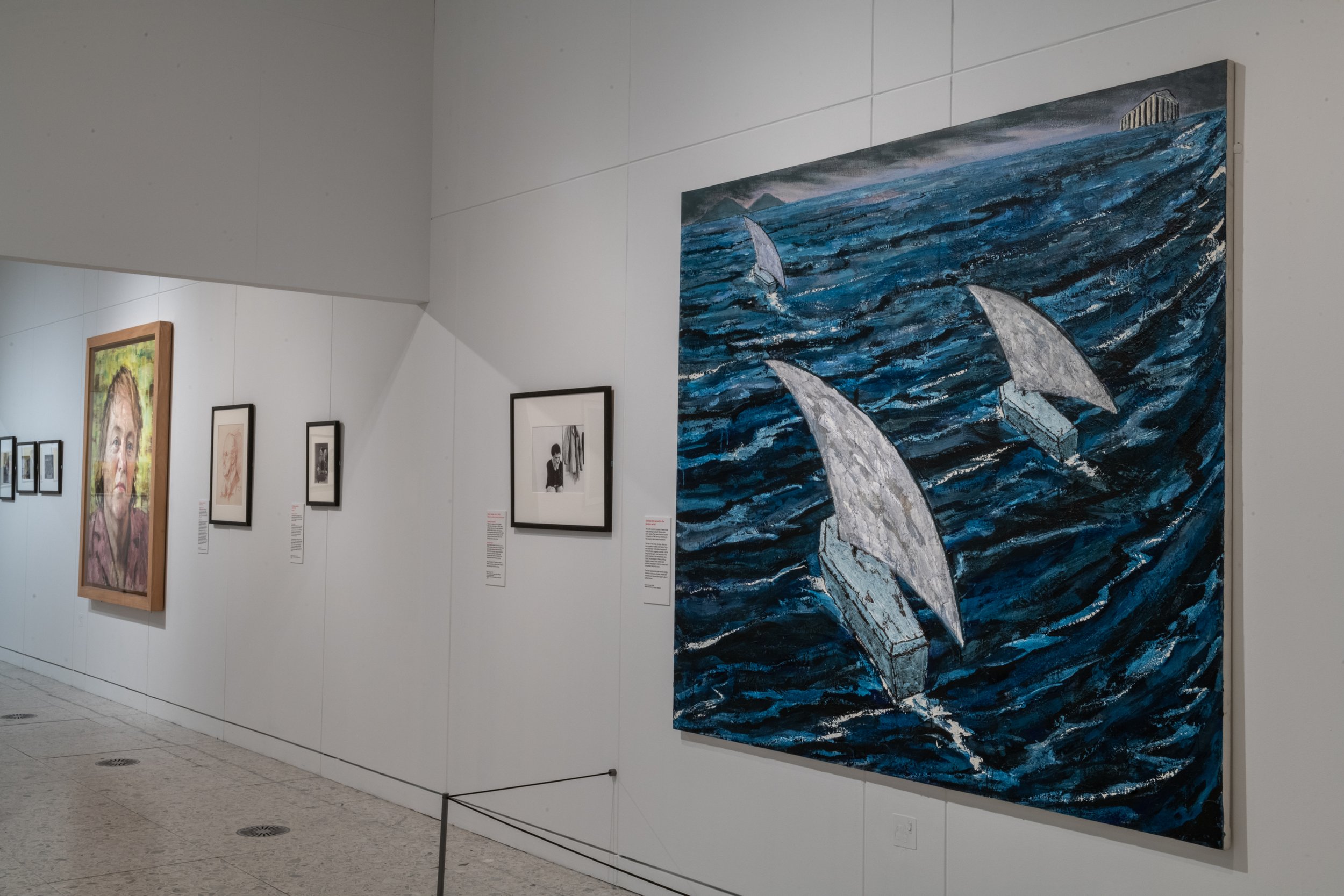
COVENTRY CONNECTIONS
Creative Connections Coventry presents over 40 internationally celebrated cultural and political figures with connections to Coventry, including Ira Aldridge, George Eliot, Ellen Terry, Graham Sutherland, Benjamin Britten, Philip Larkin, Billie Whitelaw, Mo Mowlam and The Specials.
The exhibition includes portraits recently acquired by this project for the National Portrait Gallery’s permanent collection.
Taiwo Owatemi (born 1992) - Politician
Taiwo Owatemi has been the Member of Parliament for Coventry North West since 2019.
She was raised in London, but had close links to her aunt and cousins in Coventry. Her father died when she was six and she was brought up with her siblings by her mother, a nurse. Owatemi is a qualified pharmacist and worked at a cancer unit in the NHS before she entered Parliament. She was selected for a parliamentary internship by the Social Mobility Foundation and gained experience working for the government. A member of the Labour Party, Owatemi has been Shadow Minister for Women and Equalities since 2021.
Zarah Sultana (born 1993) - Politician
Zarah Sultana has been the Member of Parliament for Coventry South since 2019.
She was born in the West Midlands and raised in Birmingham. She joined the Labour Party in 2011 in reaction to the government's decision to treble university tuition fees. While at university, Sultana was elected to the National Executive Council of both Young Labour and the National Union of Students.
This photograph featured in Vogue magazine when Sultana was profiled by Marie Le Conte along with her Labour colleagues Charlotte Nichols, Taiwo Owatemi and Sarah Owen. In the interview she spoke about the abuse she receives as a Muslim and a woman of colour.
Guz Khan (born 1986) - Comedian, actor and writer
Guz Khan grew up in Hillfields and graduated from Coventry University.
He came to prominence through his online videos that are performed in the guise of Guzzy Bear, and include a variety of characters including Mobeen, a British Pakistani Muslim. He went on to write and star in his own series Man Like Mobeen, for which he won a host of awards and accolades. He is also a stand-up comedian who has appeared on Live At The Apollo, and an actor who appeared in Idris Elba’s Netflix comedy Turn Up Charlie.
The Selecter - Band
The Selecter formed in Coventry in 1979. They performed at Tiffany’s, The Hand and Heart, The City Centre Club and many other venues around the city.
The Selecter is one of the most successful 2 Tone ska bands. Their debut album Too Much Pressure was released in early 1980 and rose to number 5 on the UK album chart, eventually going gold. The group feature a diverse line-up, both in terms of race and gender fronted by Pauline Black. Founder member Neol Davies got the name for the band from the ‘selector’ function button on his record player.
The photograph was taken by British-born photographer Janette Beckman whose work focuses on music and subcultures.
The exhibition connects collections through these famous sitters. For example Graham Sutherland’s Trial Piece for the tapestry in Coventry Cathedral, owned by the Herbert, is displayed here next the National Portrait Gallery’s portrait of Basil Spence, who is shown seated in front of the tapestry. Next to this is a portrait of Graham Sutherland himself, also from the collection.
Coventry
This work is made by using a map of Coventry from 1945 and a score of Benjamin Britten’s War Requiem. The sculpture has been burnt in accordance with damage depicted on maps that showed the damaged areas of the city in the Second World War. On 14 November 1940 the city centre, including the medieval Cathedral, was largely destroyed during a wave of high explosive bombs and incendiary bombs.
A new Cathedral was constructed next to the ruins. It was inaugurated by the performance of a specially commissioned choral work, War Requiem, by Britten in 1962. Pages from the score of War Requiem form the walls in Coventry. The piece draws on nine poems by First World War poet Wilfred Owen and the text of these poems has been written into the street network of wartime Coventry. The text of the Latin mass forms the outside circumference of the sculpture.
Graham Sutherland (1903-1980) - Artist
Graham Sutherland was commissioned to design the Christ in Glory in the Tetramorph tapestry in the new Coventry Cathedral.
He began painting in 1931, producing a wide range of work, including portraits, landscapes, industrial scenes, book illustrations, commercial posters and textile designs.
In 1946 he painted a Crucifixion scene for the transept of St Matthew's Church in Northampton. It was Basil Spence’s admiration for this painting which led him to commission Sutherland for the Coventry Cathedral tapestry.
The tapestry, measuring 22 metres high and 11 metres wide, arrived in Coventry on 1 March 1962 and it took a month to hang it correctly.
John Piper (1903-1992) - Painter, printmaker and designer of stained-glass windows
As an official War Artist, John Piper recorded the destruction of Coventry Cathedral the morning after the Coventry Blitz. He was commissioned by Basil Spence to design the stained glass baptistry window for the new Coventry Cathedral.
In the 1930s John Piper was one of the leading abstract painters in Britain. This drawing shows him seated in front of Forms on Dark Blue (1936), one of his largest and most important works of the period.
From 1950 Piper began working in stained glass in partnership with Patrick Reyntiens. For the Cathedral baptistry window they produced an abstract design on a vast scale, with 195 lights of stained glass in primary colours. Piper’s painting Interior of Coventry Cathedral, 15 November 1940 is displayed in the Peace and Reconciliation Gallery at the Herbert.
Graham Sutherland worked on the design for the Coventry Cathedral tapestry for several years before a final version was agreed. He recommended the French weavers Pinton Frères to make the tapestry. This company had a 12-metre-wide loom and was one of the few companies in the world that could weave the tapestry in one piece.
A photographic enlargement of Sutherland’s final design was produced which the weavers used as a pattern. In early 1959 Pinton Frères produced this trial piece of the Eagle of St John. As a result of studying the enlarged photographs and the trial piece Sutherland felt that some aspects of his design were not translating successfully from painting to weaving, and he made some further changes to the design.
Dame Ellen Terry (1847-1928) - Actor
Ellen Terry was born in Coventry to a family of actors who were on tour in Coventry at the time of her birth.
She was the leading actor of her day. She was a great Shakespearian and comic actor and popularised playwrights such as Henrik Ibsen and George Bernard Shaw. She performed her most memorable roles under the management of Henry Irving with whom she undertook tours of theatres in the UK and toured America seven times. In later life, she continued to act but also produced plays, lectured and wrote.
This painting by John Singer Sargent was made for reproduction in Terry's golden jubilee programme of 12 June 1906.
Vanley Burke (born 1951) - Photographer
In 2001, Vanley Burke was commissioned by the Herbert to produce a series of photographs of people and places in Coventry. A selection is shown here.
Born in Jamaica in 1951, Vanley Burke moved to the UK in 1965 to join his family in Handsworth in Birmingham. He brought with him a ‘Box Brownie’ camera that he had been given for his 10th birthday. His first studio was in Handsworth and his photographs capture the experiences of the African Caribbean community in Britain. Burke’s work reflects the everyday social, economic and cultural lives of Black people and aims to counteract negative perceptions or stereotypical imagery of Black people found in mainstream media.
This portrait is by photographer and artist Pogus Caesar. During the 1980s, Caesar was Director of the West Midlands Minority Arts Service and in 1985 both he and Burke photographed the Handsworth Riots.
These photographs were taken in Coventry in 2001 when Vanley Burke was commissioned by the Herbert to capture images of people and places in the city. The names of the subjects were not recorded but together they form an intimate ‘snapshot’ portrait of the community at that time. If you know or recognise anyone in these photographs, we would love to know.
Mo Mowlam (1949-2005) - Politician
Mo Mowlam grew up in Coventry and attended Coundon Court School and joined the Labour Party in her first year at Durham University. She was Member of Parliament for Redcar from 1987 to 2001 and Secretary of State for Northern Ireland. She played an important role in orchestrating the Good Friday Peace Agreement, signed on 10 April 1998, effectively ending the 30-year conflict in Northern Ireland known as The Troubles. The following year she was awarded the Freedom of the City of Coventry.
Mowlam was a popular politician and known for her charisma and plain speaking. This painting was originally planned as a group portrait commemorating the Northern Ireland Peace Negotiations but ended up as a portrait of Mowlam on her own. After her death, Tony Blair described her as 'one of the shrewdest political minds I ever encountered'.
George Eliot (1819-1880) - Writer
George Eliot spent much of her life in Coventry and Nuneaton. Her best-known work, Middlemarch, is said to be partly based on her experiences of living in Foleshill as a young woman in the 1840s.
George Eliot was the pen name of Mary Ann Evans. Her novels explore rural provincial life, and include The Mill on the Floss (1860), Romola (1862-3) and Middlemarch (1871-2). She challenged Victorian social conventions by living for many years with the writer and critic George Henry Lewes, who was separated, but not divorced from his wife.
Visiting Geneva in 1850, she sat for two portraits by the Swiss artist François D'Albert Durade, one of which is shown here. The postcard is an 1881 reproduction of a photograph taken in 1858. She described it to her publisher as ‘not thoroughly satisfactory.'
Lisa Gunn (born 1975) - Artist
Lisa Gunn was born in Coventry, and continues to live and work in the city, exhibiting nationally and internationally.
While studying fine art at Coventry University in 1997, Lisa Gunn was partially paralysed in a road accident. She went on to develop work which challenges society’s beliefs and ideas about disability. Although the work shown here is a self-portrait, Gunn has given it the title Victoria. This is a reference to the restrictions imposed on women in the Victorian period, symbolised by the corset she is wearing, and also to the victory or empowerment she has achieved through her art.

WHO AM I?
Maryam Wahid (born 1995) is a Birmingham-based artist who uses photography to convey her identity as a British Pakistani Muslim woman. Through her deeply rooted family history and the mass integration of South Asian migrants within the UK, her photographs explore womanhood, memory, migration and the notion of home and belonging.
For Creative Connections Coventry, Wahid worked with Year 9 art students from Barr’s Hill School to explore and celebrate iconic people linked to Coventry. A series of creative workshops, discussions and photographic sessions led to the collaborative portraits displayed here.



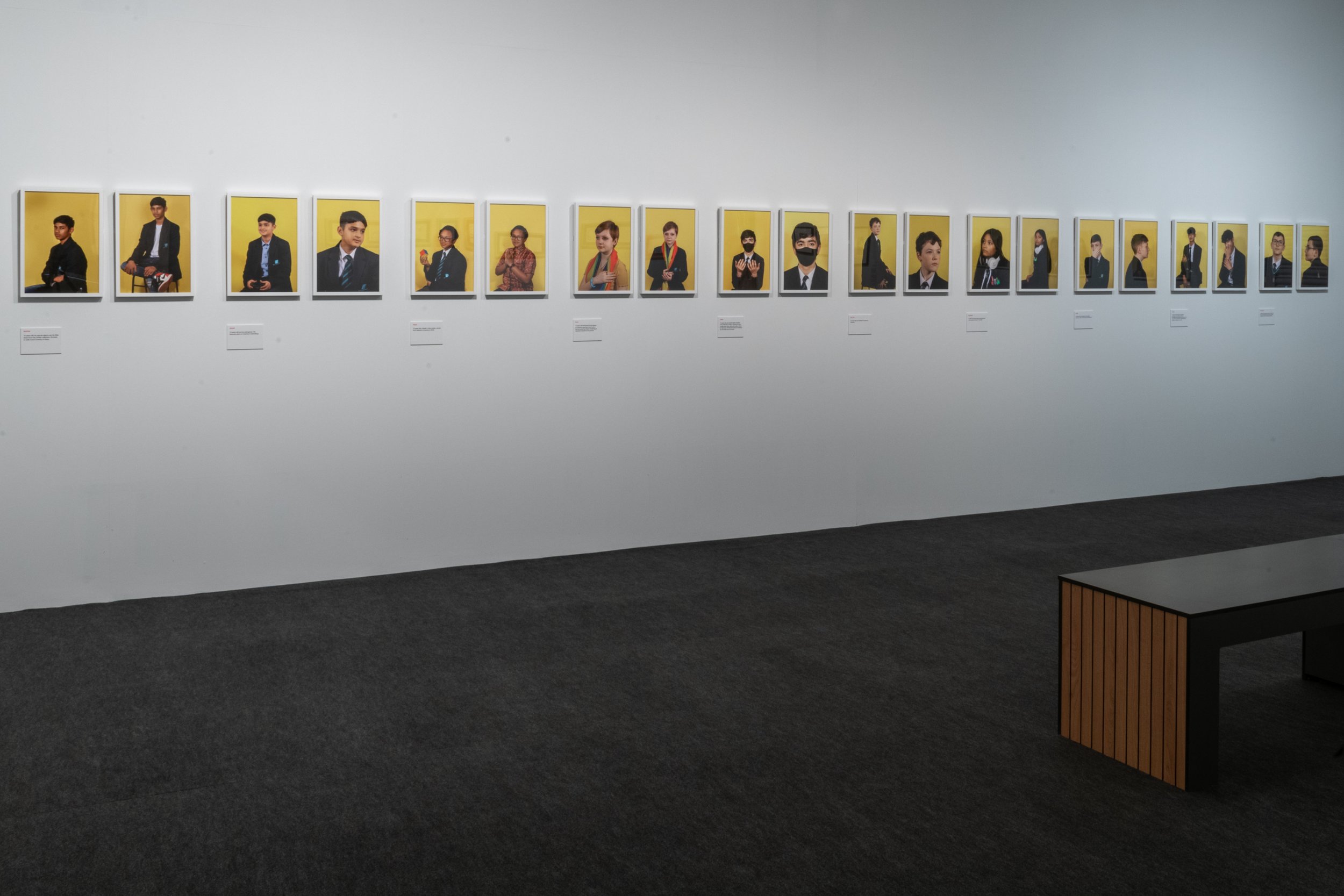

Wahid’s Who Am I? series focusses on the identity of the next generation of Coventry. These fine art portraits are a reflection of the hopes, dreams and aspirations that these 13 and 14-year-old students at Barr’s Hill School have for themselves and for Coventry. Portrait diptychs of 15 of the students are displayed opposite sketches of objects that are significant to them.
The students were drawn to particular people and poses in the works from the National Portrait Gallery’s collection, and Wahid used these connections as a guide to depicting the young people in their own portraits. For some students, the impact of the pandemic is portrayed, yet they still adopt poses of great pride.
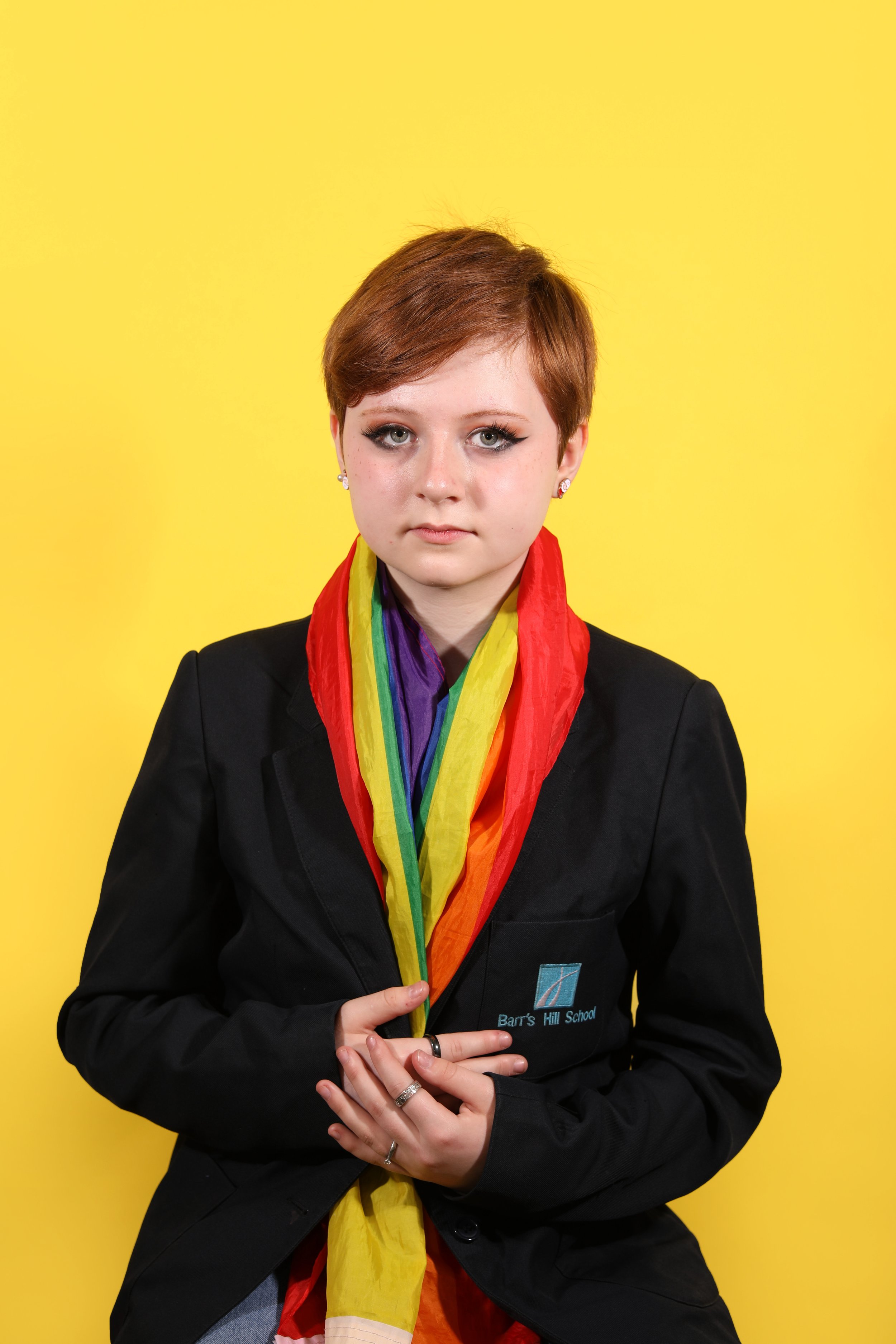
Ella, 14 years old and proud of the history of Coventry especially Lady Godiva. She borrowed her friends pride flag to represent herself for this portrait.
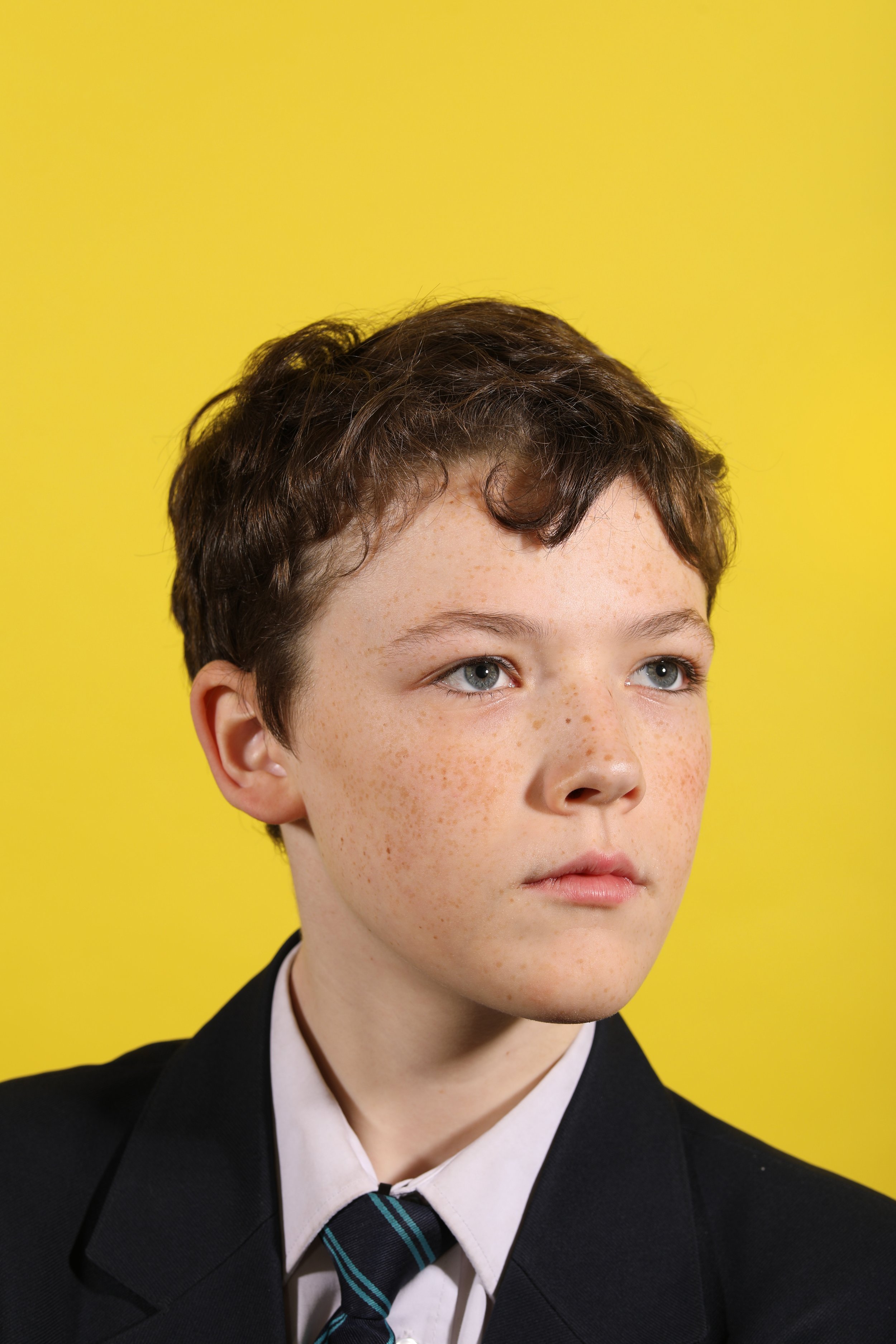
Declan, 13 years old, loves Radford Common in Coventry City.

Nushrat, 13 years old, loves music and the diverse communities that live in Coventry.

Zana, 14 years old, can speak English, Kurdish and a little bit of Arabic. Coventry for him is safer than other cities and a place where he feels free. His favourite place in Coventry are the fields near his house.
Signs and symbols have significantly crafted the portraits of the students who wanted to be represented, sharing their beliefs and emotions, and ultimately showing the cultural identities that live within Coventry today.
Maryam Wahid often uses signs and symbols in her photographs as metaphors to represent identity and heritage. Wahid assigned Barr’s Hill School students were to sketch objects significant to them and what best represented them today. This activity acted as a building block for them to think about how objects are used within portraiture and how they can illustrate their story through objects, signs and symbols.
The objects can be physically identified in their portraits however, for some students the objects; have acted as a metaphor to depict them. Each and every object was notably individual to the students and unveiled their hobbies and interests but also; their traits and personalities as young people living in Coventry today.

BARR’S HILL SCHOOL
For Creative Connections Coventry, Year 9 art students from Barr’s Hill School worked with Maryam Wahid and the Herbert’s Learning and Engagement Team to explore and celebrate iconic people linked to Coventry. A series of creative workshops, discussions and photographic sessions took place at the school and at the Herbert during autumn and winter 2021. Some of the process work created during these sessions are displayed here.
The students researched and made mind maps and mood boards focussing on the portraits from the National Portrait Gallery and reflecting Wahid’s creative process. Inspired by symbols found in the portraits, they considered what objects might represent their own identities. In these works, you will find imagery such as a football, a dress, a Rubik's Cube and jewellery that the students used to make patterns, prints and drawings. In photographic workshops, the students experimented with pose, lighting and expression.



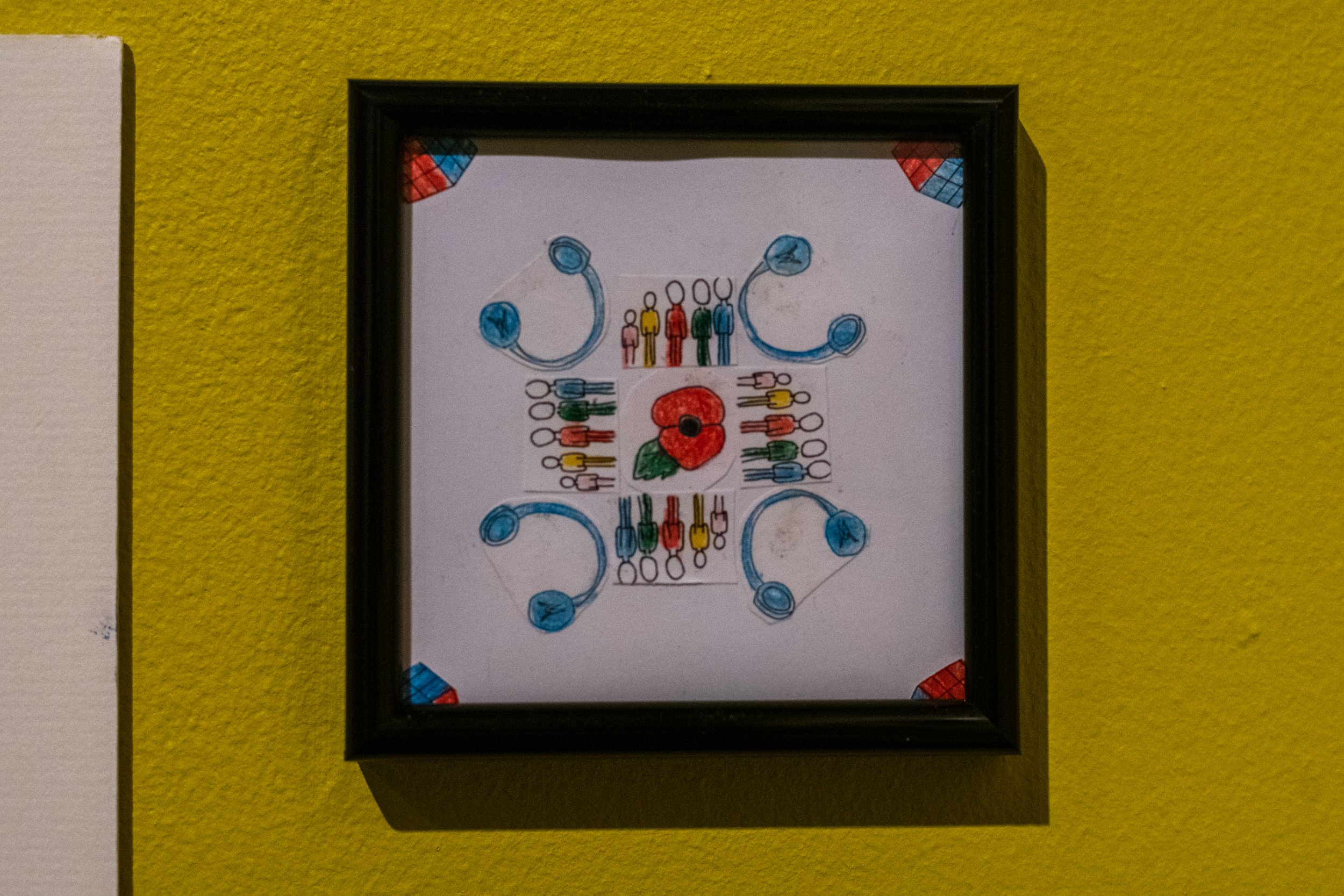
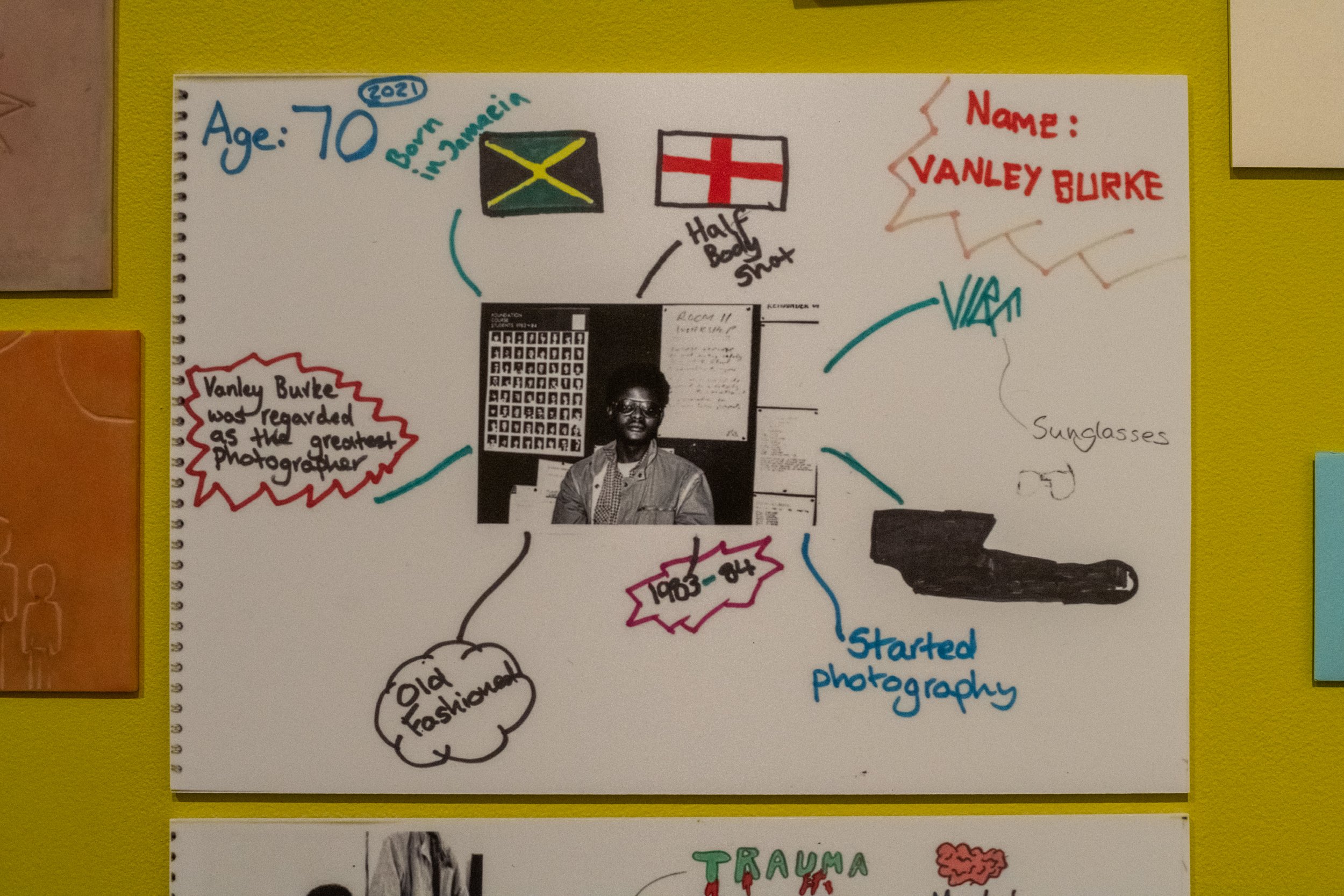

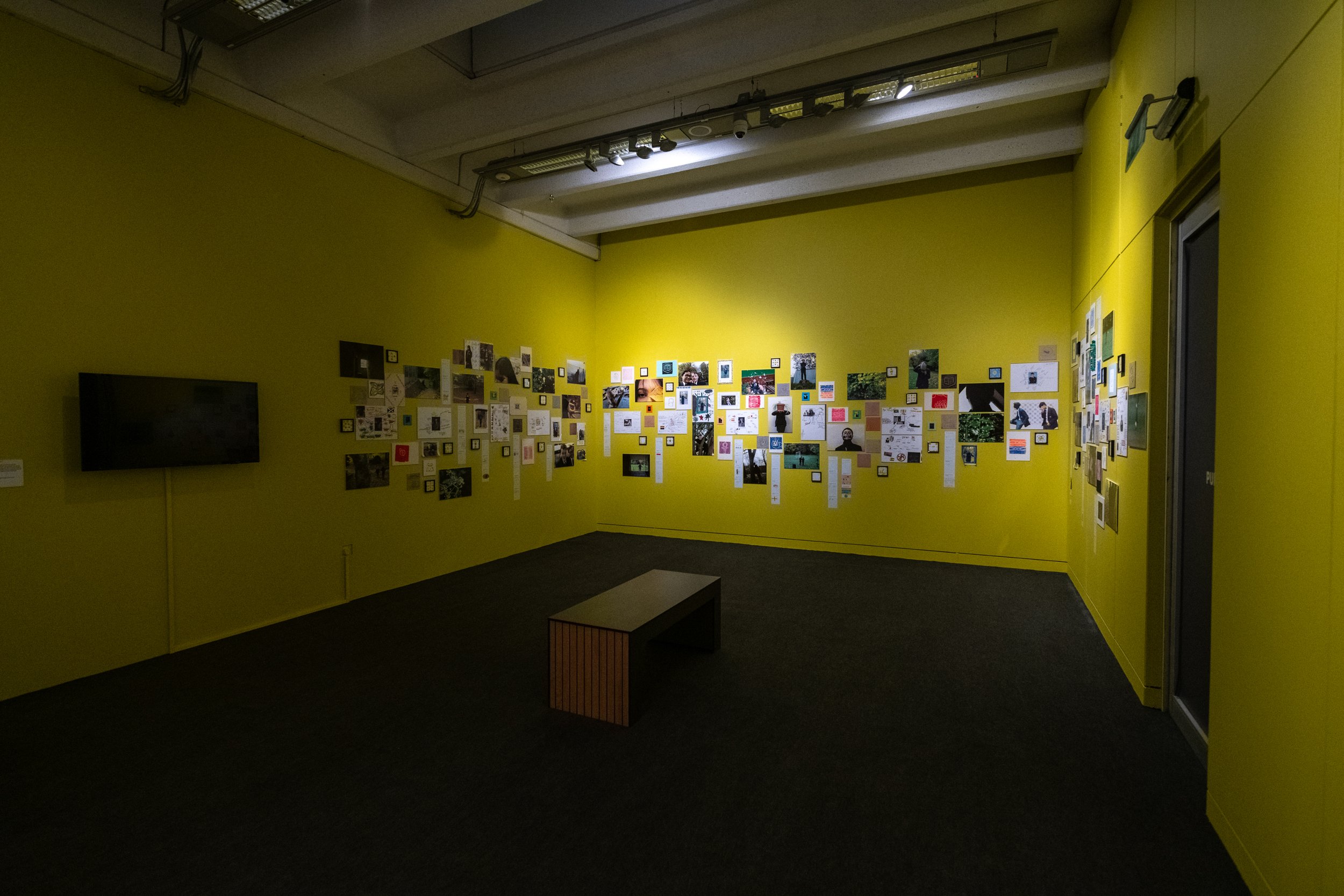
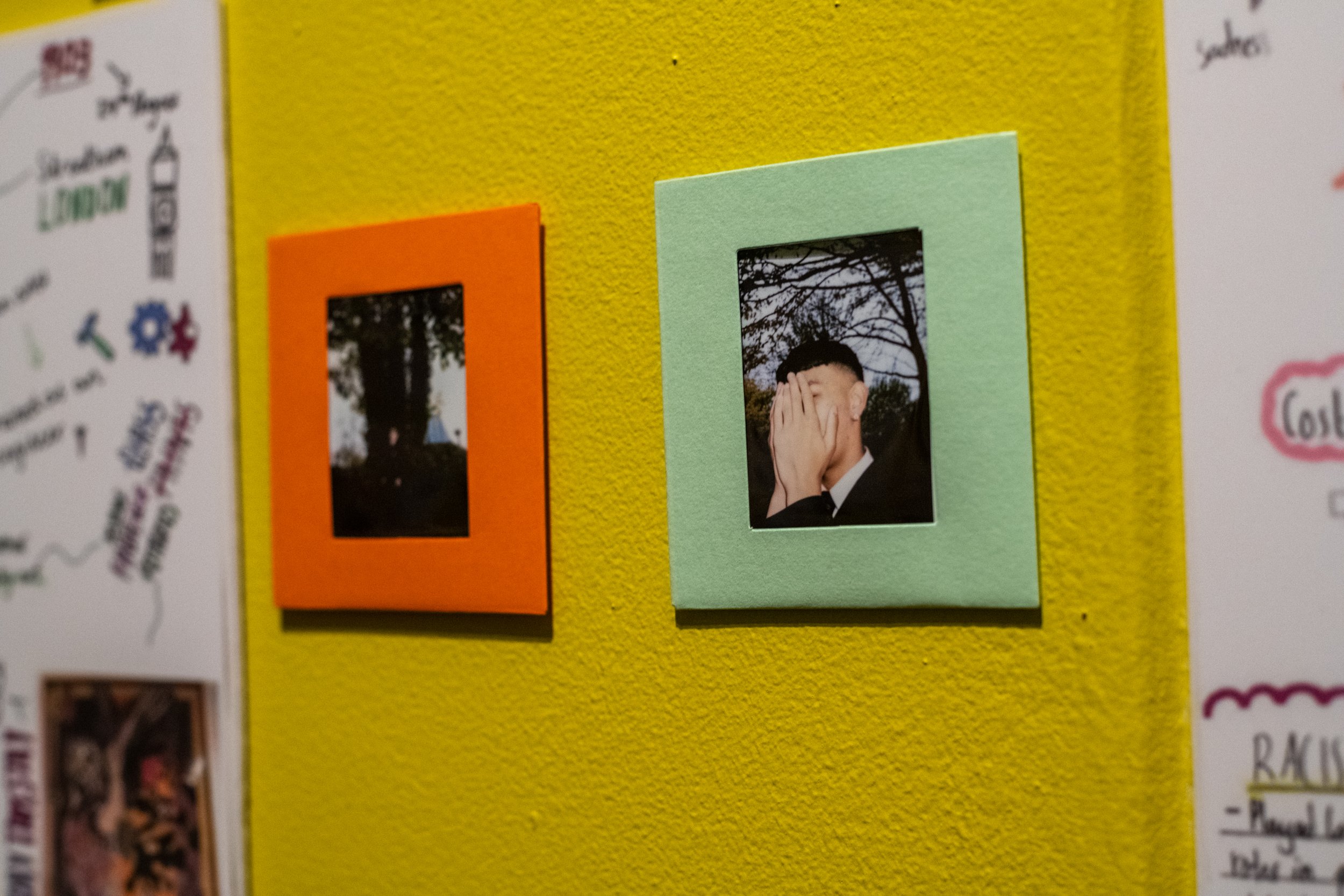
This section also features the musician and composer Delia Derbyshire, who was born in Coventry and educated at Barr’s Hill Grammar School from 1948 to 1956. She is best known for her electronic arrangement of the theme music to the science-fiction television series Doctor Who, but she is also admired for her significant contribution to the development of electronic music and sound design.
We were unable to acquire a portrait of Delia Derbyshire during this project and so the students worked with the organisation Delia Derbyshire Day, whose work is centred around the Delia Derbyshire Archive held at John Rylands Library in Manchester. Taking inspiration from Derbyshire and her work, they created their own soundscape to represent her, which forms the backdrop of the project film.
For a more in-depth exploration of Creative Connections, please visit the gallery spaces through Matterport:
This has been captured on a phone, please forgive any scanning glitches.
The digital exhibition has been curated by Joy Corcec.

